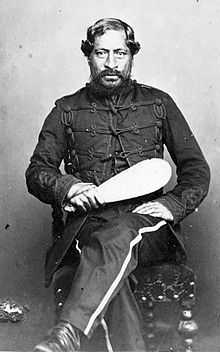Patu


A patu is a generic term for a club or pounder used by the Māori, the indigenous people of New Zealand. The word patu in the Māori language means to strike, hit, beat, or subdue.[1]
Weapons
These types of short-handled clubs mainly used as a striking weapon. The blow administered with this weapon was a horizontal thrust straight from the shoulder at the enemy’s temple. If the foe could be grasped by the hair then the patu would be driven up under the ribs or jaw. Patu were made from hardwood, whale bone, or stone. The most prestigious material for the patu was pounamu (greenstone). Patu made from pounamu were generally called "mere". Maori decorated the patu by carving into the wood, bone or stone.
Types of patu include:
- patu pounamu or mere - made from pounamu (greenstone).
- patu onewa - made of stone. These resemble the mere in outline but thicker, because the stone used was more easily broken than the resilient pounamu.
- patu paraoa - made of whale bone. Other short handled clubs made from wood include those named for the Kotiate and Wahaika forms.
- patu tawaka and patuki - made from wood. Other short handled clubs made from wood include those named for the Kotiate and Wahaika forms.
- patu pora - made from iron.[2] Another short handled club made from iron was the Patiti or war hatchet.
Pounders
Types of nonweapon patu include:
- patu muka - a pounder used to soften flax fibre (muka) in preparation for weaving.
- patu aruhe - a pounder used to break up edible fern roots for food.
References
- ↑ "Maori Dictionary". Te Aka Māori-English, English-Māori Dictionary and Index Online. Pearson. Retrieved 20 November 2011.
- ↑ "Paya pora" , Journal of the Polynesian Society, volume 39 1930
External links
- Mere pounamu in the collection of the Museum of New Zealand Te Papa Tongarewa
- Patu onewa in the collection of the Museum of New Zealand Te Papa Tongarewa
- Patu paraoa in the collection of the Museum of New Zealand Te Papa Tongarewa
- Patu muka in the collection of the Museum of New Zealand Te Papa Tongarewa
- Patu aruhe in the collection of the Museum of New Zealand Te Papa Tongarewa